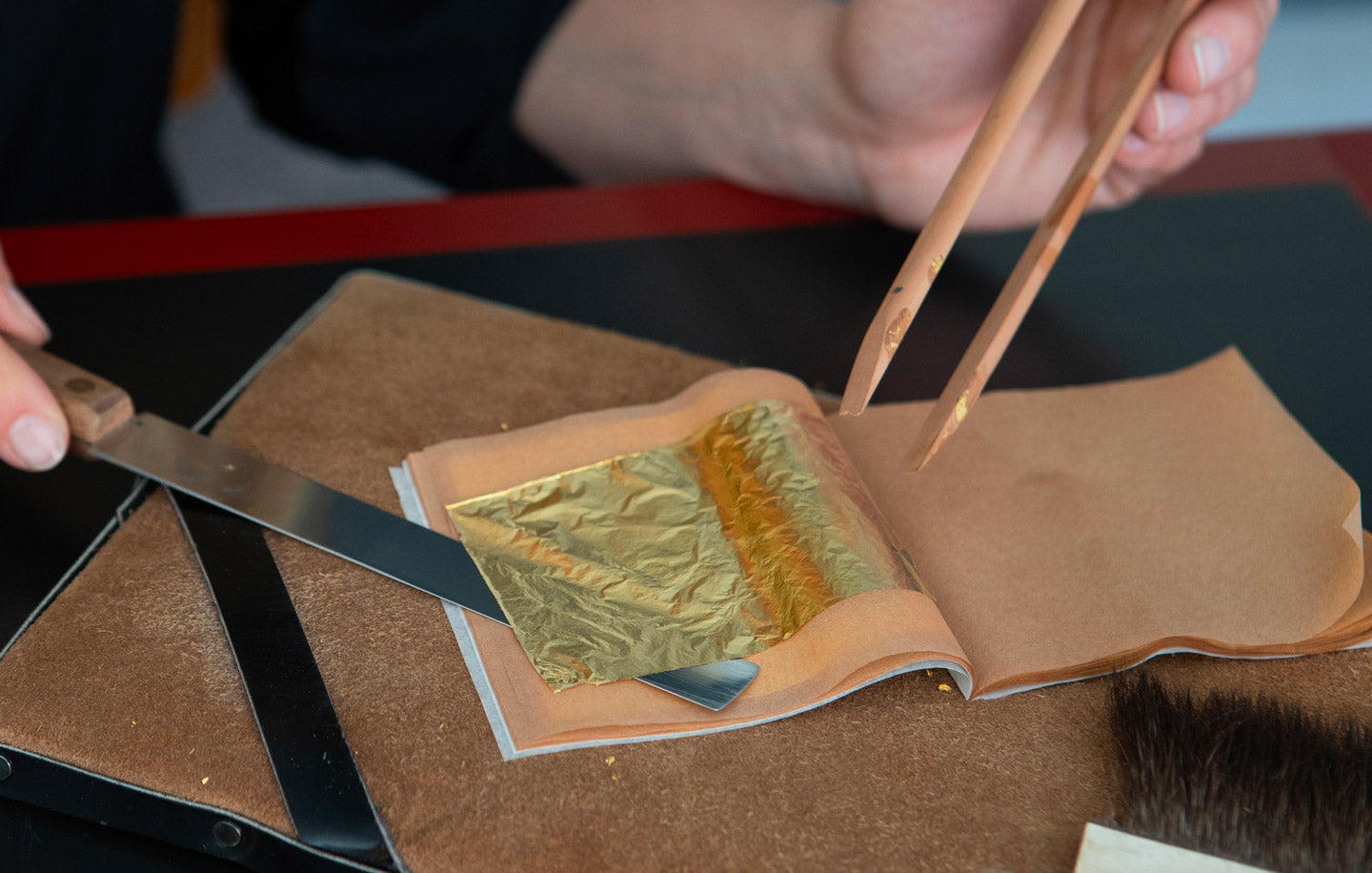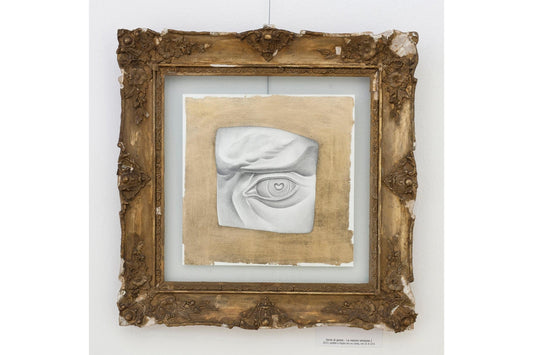The use of the gold leaf
But first, I have to confess to you why I declare that I have stolen these techniques…Given the influences that have marked my personal and professional growth, it was inevitable that, with a restorer mother, some techniques used to realize my works were, sort of speak, “stolen” from the world of restoration.
In particular, I refer to the use of gold leaf and the rigatino technique (the vertical hatches made with the pencil).
Today I will tell you about the first, namely the use of the gold leaf.
The obsession with gold leaf and the “King Midas’ Touch” Syndrome
It is known that gold is opulent in itself and, if its use is not wisely dosed in the decoration, you can run the risk of making the whole work tawdry, if not downright vulgar.This risk of exaggerating with its use can lead to what I ironically call the “King Midas’ Touch” Syndrome.
This “syndrome” usually hits me during the decoration phase.
When I start to apply the gold leaf, I instinctively tend to add more and more of it…
I end up saying to myself, “One last touch of it” or “A little bit is still missing”.
Fortunately, with the years, the experiments, and the discipline, I managed to find the right balance; now I can stop the irrepressible instinct to apply “That last leaf” which would risk ruining the drawing’s balance and harmony.

The original production method – already in vogue in the Egyptian era – involved hammers that beat the gold until very thin layers were obtained; real gilded sheets.
Anything that requires patience, technique, and craftsmanship has always caused great interest and fascination in me.
This was one reason that led me to choose a very specific artisan as a supplier for the gold leaf I use in my artworks.
It must also be said that it takes incredible discipline and patience, not only for its production but also for its use!
I am not referring to the danger of running into the syndrome I mentioned earlier, but rather to the application in and of itself.
In fact, once the mission (the glue used to grip the gold leaf to the paper) has been spread, you must be particularly careful even when you breathe!
In fact, if you do not pay particular attention, a simple breath can disperse the golden leaves – which are incredibly fine and light – around the whole laboratory, thus recreating the same feeling that you could live if you were inside one of those Christmas snowballs.

This need for discipline, calm, and precision leads us to the second technique stolen from the world of restoration: the rigatino.
You can immediately read the article dedicated to this technique by clicking here.
Now I’d better go back to sharpening the pencils. See you soon!




